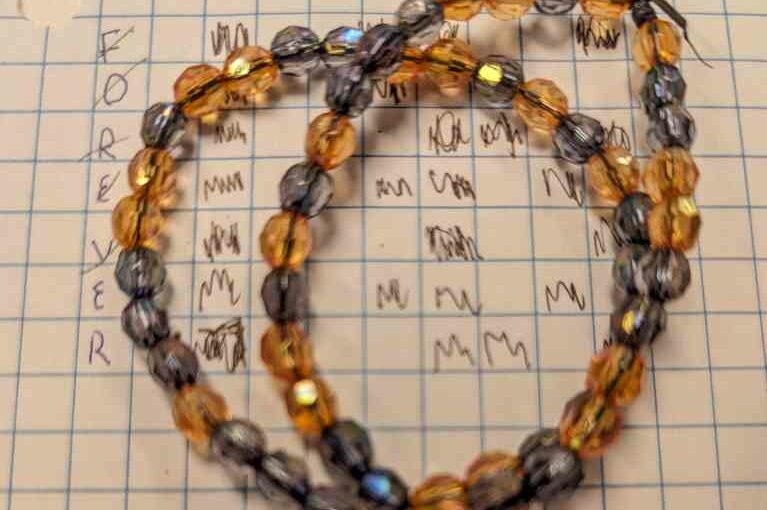Binary Beads
One of the big concerns when teaching Indigenous culture and experiences is historicizing it. To lock indigeneity in history is to forget that Indigenous cultures and people exist, with the capacity of change and connection that any person or community has. Binary Beading with Noel Pippin connects Indigenous art and pedagogy to technology, math, ADST, and language. Oh the things a bead can do!
One of the big continuous goals for an educator is engagement. SD57 now uses the language engagement instead of management, the idea being that behaviorual problems largely stem from a lack of engagement. Pippin told stories of incredible engagement and despite my frustration I was hooked. We were melting strings, creating tools out of random objects, it became more than just interactive learning, it was inventive learning.
The other cool part of project centered lessons, they scale really successfully. The lesson is scalable for ability, age, available materials, and even time constraints. Pippin runs this lesson with everyone from kindergarten to adults and educators. You can modify beading technique, word length, or even degree of binary coding to adjust a lesson to students, really extending universal design for learning. Also, there’s no need for class access to the often limited resource that is computers.
My three big takeaways are that it’s great to practice FPPL in modern contexts, creating is fun and also easy to tie to curriculum and competencies, and you can teach technology in ways that don’t necessarily rely on consistent access.

